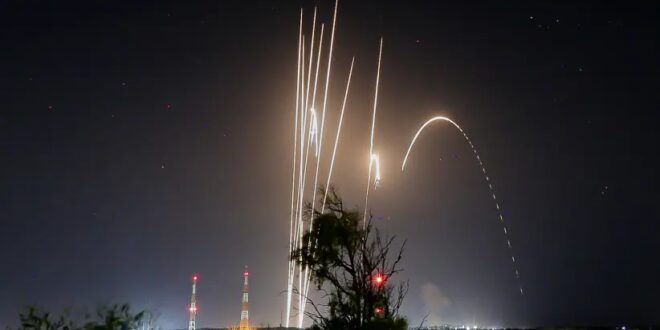The arsenal of 14,000 rockets is believed to be worth millions.
In the ongoing fight between Israel and Hamas about which side can outlast the other and who will seem more desperate for a ceasefire first, a key issue is cost.
It is well-known that Iron Dome interceptors cost far more than the Hamas rockets they shoot down.
But Israeli officials have already arrived at the conclusion that the Iron Dome is worth the price and that the more relevant comparison is how much Israel would pay in lives and destruction of property if there was no Iron Dome.
Yet, what is the real cost for Hamas’s continuing to fire rockets – and does this vary depending on long-range rockets that can hit Tel Aviv and central Israel in comparison to short-range rockets whose range is limited to along the Gaza border?
Of the almost 3,000 rockets fired over the last week – out of the 14,000 that Hamas is believed to have – only a few hundred have been the long-range rockets.
Missile experts Uzi Rubin and Tal Inbar said that the difference in cost is not significant enough to restrain Hamas.
This is true despite the fact that some of the rocket launchers have multi-barrels and are capable of firing between four and nine rockets at a time.
Rubin, considered one of the fathers of Israeli missile defense, said that even Hamas’s “best” rockets are relatively simple to make, inexpensive and not known for their extended range.
Unlike Hezbollah in Lebanon, which has some expensive precision long-range rockets, Rubin said that Hamas’s long-range rockets are actually less accurate than its short-range ones.
Reports estimate that the main short-range Hamas rocket called the Qassam costs anywhere from $300 to $800 each.
There is much less public information about the cost of Hamas’s longer-range rockets such as the R-160, M-302D, M302-B, J-80, M-75, Fajr-3, Fajr-5 and a second-generation M-75.
TAL INBAR, former head of the Fisher Institute’s space research center, estimates their cost to be in the low thousands of dollars per rocket – or two to three times more than the shorter-range ones.
This is still nowhere near the cost of Iron Dome’s interceptors – estimated to be between $50,000 and $100,000 each.
Interestingly, Inbar said that a significant part of the cost was less the cheap materials and manufacturing, but the costs of smuggling certain items from the Sinai, Sudan and other places for rockets which cannot be made locally.
He added that Hamas does not have cyber capabilities to steal funds electronically like North Korea, or other sources of income like Hezbollah.
However, both Inbar and Rubin said that Iran delivers or pays for nearly all the rockets, meaning that it doesn’t really cost Hamas anything to replenish its arsenal.
Inbar noted a statement by Hezbollah leader Hassan Nasrallah in December 2020 when he said: “Most of the weapons, missiles and facilities that Palestinian resistance groups have in Gaza are supplied by Iran’s Islamic Revolutionary Guard Corps’ Quds Force. The Islamic Republic used its diplomatic relationship with Sudan to establish a weapon factory for Gaza in Sudan.”
He also cited an interview by Hamas chief Ismail Haniyeh last May when he stated that “I am particularly specifying the Islamic Republic of Iran, which has not faltered in supporting and funding the resistance financially, militarily and technically. This is an example of the Republic’s strategy that was established by [former supreme leader] Imam [Ruhollah] Khomeini.”
Even if cost cannot slow them down, given that Hamas has already used up to a few hundred long-range rockets to fire in the direction of Tel Aviv and central Israel, might they soon run out of the capability to hit Israel in these crucial spots?
Both Rubin and Inbar were dismissive, saying that even IDF intelligence at best has imperfect estimates.
Rubin noted that the IDF had not known Hamas had a rocket which could reach the Eilat area until it was used.
They said they were confident Hamas had plenty more long-range rockets to fire on Tel Aviv and central Israel, with the proof being that at the tail end of every recent Gaza war, they were able to fire some rockets anywhere they wanted.
Accordingly, they suggested that Hamas might be able to keep up some amount of regular rocket fire on Tel Aviv and central Israel for a period of weeks.
 Eurasia Press & News
Eurasia Press & News



